A few years ago I wrote a post, Clip-Microphones for Clarinet and Bass Clarinet, which has become my most-read article, and attracts quite a lot of visitors and questions regarding clarinet mics. In that post I came to the solution of using an AMT TA2 microphone for clarinet and bass clarinet, albeit with a bit of DIY. I’ve just gotten a new mic, the Intramic made by French company Viga Music Tools, which is making me think that I should shift my recommendation.
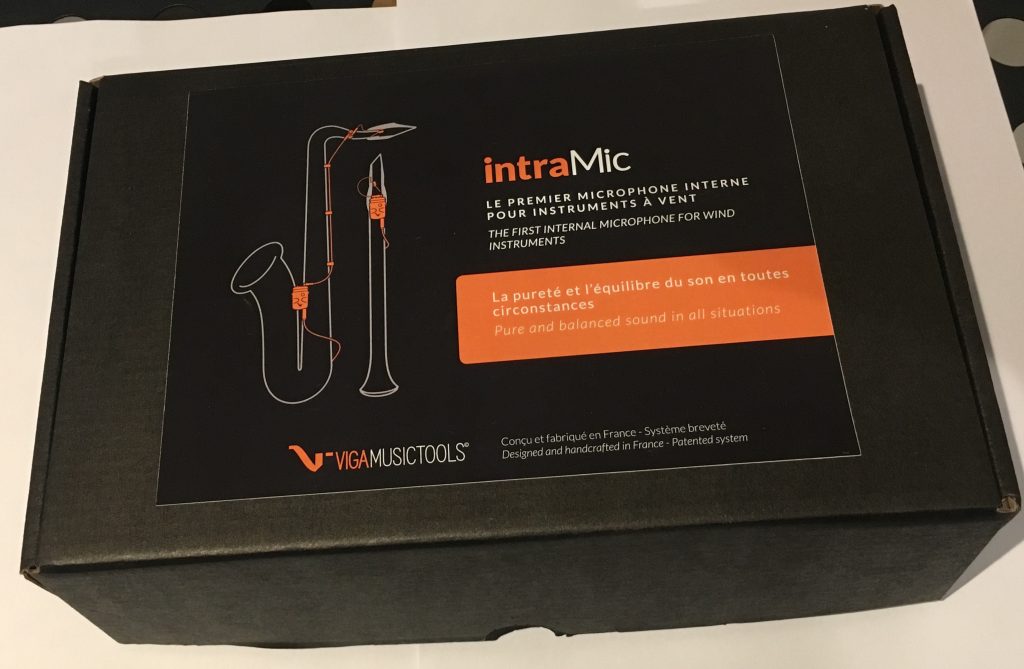
The Intramic is similar to pickup-style mics made by Rumberger or Nalbantov, which are fitted onto the barrel or neck of a clarinet or saxophone. The key features of these types of mics are:
- Don’t produce feedback
- Isolated from other instruments on stage
- Even coverage of the entire range of the instrument.
However the Intramic DOESN’T REQUIRE DRILLING INTO THE INSTRUMENT!! This was the biggest negative point of these types of mics for me, because I didn’t want to drill holes into my horns. The Intramic sits inside the instrument but is on a flat cable which feeds its way along the tenon cork of the mouthpiece and out, thereby not requiring any modification to the instrument. Also, I think the Intramic sounds better.
What’s Inside
You can watch my unboxing video of this mic here:
The mic components can be bought individually, or there are kits available. The bare minimum needed is:
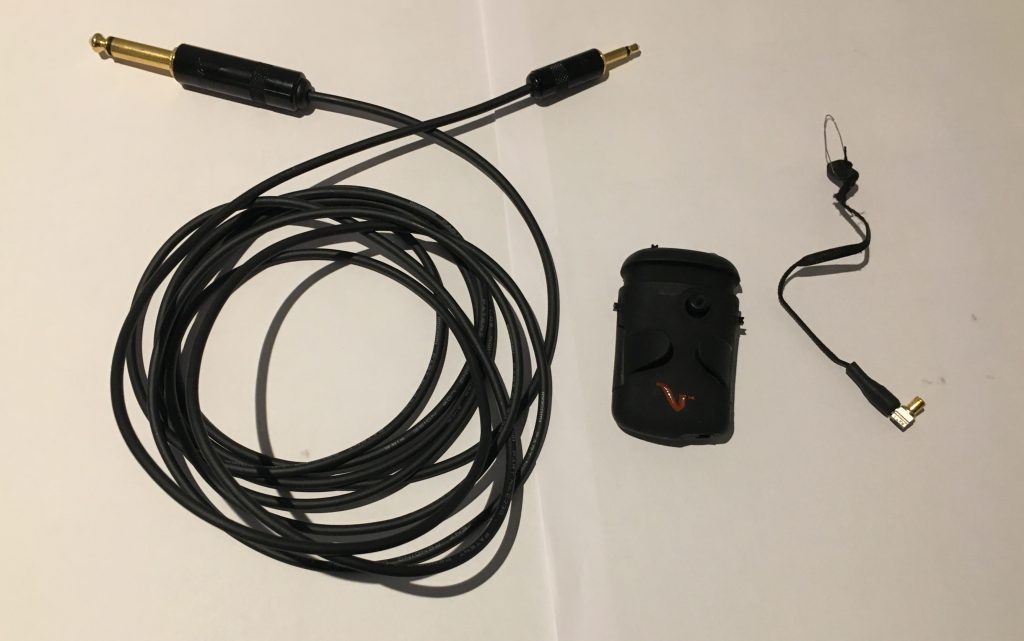
- Mic cell (Type 2 for clarinets)- €125
- Preamp- €220
- Cable- €22,50
Totalling to €367,50. The Simple Kit is €50 more (€417) and includes a bunch of elastic bands for attaching the preamp, 3 clips to attach the cable to posts on the instrument to keep it out of the way, extra batteries, some maintenance tools, and a bag to carry everything in. These are all handy things to have but if you’re really on a budget you could get everything else on your own at a local hardware store, except perhaps for the clips, which are also one of the most useful extras, but you can also buy those individually for €8,50.
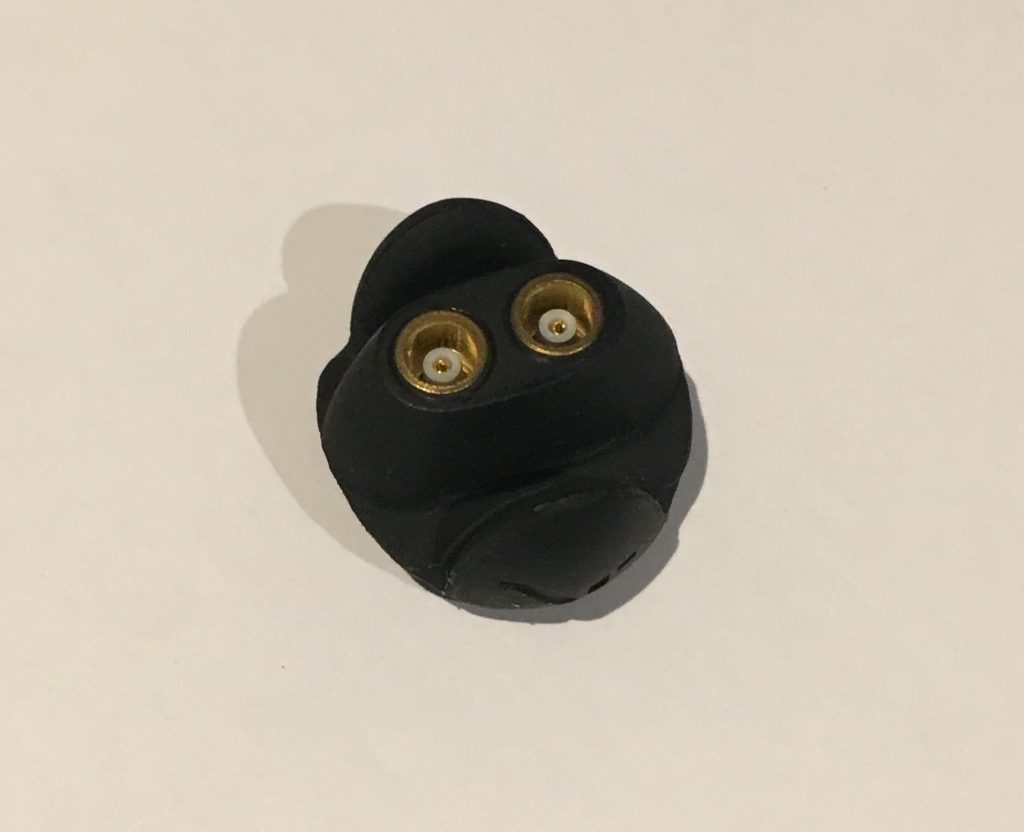
The Coupler Kit is €485 and has everything in the Simple Kit, but also adds a coupler (€31 to buy individually) and extra cable (also €31), which allows you to move the preamp and attach it somewhere other than right next to the mouthpiece. This is the kit that I got because I wanted the flexibility to be able to move the preamp around, but in reality I probably won’t use it much. The preamp is very small and doesn’t get in my way, and adding the coupler just adds more to the setup. Keep it simple! I do, however, see some potential uses of the coupler, like if I wanted to use my AMT wireless system, so I am glad that I have it just in case.
As I mentioned in the video, I was very impressed with how small and light everything is. I also like that the preamp is covered in a rubber case rather than plastic.
Setting it up
I also made a video showing the installation of the Intramic on clarinet, bass clarinet, and contrabass clarinet:
So the mic goes inside the instrument, the flat cable feeds out along the tenon, and attaches to the preamp on an MCX cable. The preamp attaches to the barrel or neck of your instrument with the elastic bands. Or, you can attach the mic to the coupler which is placed at the barrel or neck, and attach the preamp elsewhere on the instrument or on your person, connected to the coupler with another cable. The mini-jack cable plugs into the preamp, and the normal size jack goes into the PA system or effects units.
Besides the power switch, the preamp has switches for Presence and Brightness, an input gain on a dial on the back that is adjusted with a small screwdriver, and an output volume knob. For clarinet, I found the settings for Presence in the “Plus” position and Brightness to the “Dark (Circle)” setting to be preferable. I kept the input gain all the way down because I thought I perceived a little bit of saturation in the sound when turning it up. The light didn’t indicate I was overloading it, so it’s possible it’s entirely psychological, but I turned it down anyway.
How it Sounds
And another video! Here I demonstrate the Intramic on the clarinets along with my AMT.
If you just want to skip the talking (I don’t mind, really!) the timings are:
- 3:14– Clarinet AMT
- 4:53– Clarinet Intramic
- 6:25– Bass Clarinet AMT
- 8:41– Bass Clarinet Intramic
- 11:40– Contrabass Clarinet AMT
- 13:18– Contrabass Clarinet Intramic
I actually spent quite a bit of time trying to decide how I was going to do this video. I originally thought that I would compare the Intramic to a studio condenser, an SM57, and my AMT. But then I decided it wasn’t actually a very good way to demonstrate the mics.
The Intramic is designed to be used as a live stage mic, and so its application is very different from a studio condenser, which wouldn’t be used on stage. A studio mic picks up a lot of detail in the sound, but that also means a lot of everything else on stage. And I wouldn’t use the Intramic in a recording session, unless I wanted a very particular sound, because I normally wouldn’t do a recording with such a close mic. I would want to have more of the room sound of the recording environment, whereas the Intramic provides a very close, direct sound, which is what you want in a live setting. You want a very clean direct sound that the live sound engineer can work with without interference from other instruments on stage.
And then I thought even the idea of recording the Intramic for this video is actually not ideal, because it’s not the setting you would listen to it in. On stage, it would go through the mixing desk and then come back out through big PA speakers into the venue, and would also be mixed with the live acoustic sound you’re producing. This alone drastically changes the perception of the sound compared to listening back on your computer or phone or in headphones. Also, you should remember that anytime an instrument is amplified or recorded, you’re never actually getting the natural sound, but only ever a representation of that sound. But I thought this video should be done anyway, but do bear these things in mind anytime you’re listening to recordings and microphone tests.
I decided in the end to only do the video with the Intramic and the AMT, because those are the clip-on live mics. I’ve been quite happy with the AMT and do still like it, but there have been times where the features of the Intramic would be desirable, particularly playing in a loud band with drums. The AMT does a very good job of fighting feedback from monitor speakers, but it does sometimes still pick up other instruments on stage, particularly drums. This is a problem mostly when I’m running through some delays or reverb and the drum hits end up going through my mic and get delayed as well. The other problem is coverage. While the AMT does a pretty good job of picking up the whole instrument, there are still some spots that jump out more than others. So this means it has to be run through compression so the volume of the quieter notes can be brought up without the loud ones becoming too loud, evening everything out. And this is also what I had to do in this recording. The bass and contrabass clarinet are very heavily compressed on the AMT recordings to make the sound more even throughout the range. I’ve also applied EQ and a bit of reverb, because that’s a more accurate depiction of how the mics might sound live.
(UPDATE 12 April 2019) And here’s another video of Jeremy Diffey from Grooveboy Studios comparing his new Intramic to a Nalbantov on a clarinet.
(UPDATE 7 June 2019) And now a comparison of the Intramic to a Rumberberger on a “Paperclip” contrabass clarinet
Impressions
Overall I’m super happy with the Intramic. It does give a bit of punch and edge to the sound due to where it’s placed on the instrument, but I generally think it’s quite a natural sound. Normally these mics that are positioned so close to the mouthpiece can be very buzzy and thin, and I’ve also felt they’ve lacked some clarity in sound. Not so with the Intramic! I felt that the bigger the instrument got, the more of a punch it gave.
On contrabass clarinet I think I lose a bit of body, but that’s just a natural phenomena from the recording process, using such a close mic on a large instrument like that. It’s not something I perceive when I run the Intramic into a larger PA and through bigger speakers. It’s just something I hear in the recording process, and as I said before this isn’t the mic I would use if I were recording for a CD on the contrabass clarinet. There could be a bit of distortion that I hear, but it must be an acoustic phenomenon from the large reed. The bigger the instrument, the less pressure in the tube, and therefore the quieter the mic actually picks up. So it’s definitely not the mic recording too hot. I only really notice it when listening on headphones. But I also don’t think there’s any better alternative for contra in a live setting. I tried the three mic setup live in a trio with electric guitar and drums and running through electronics, and it was a disaster. The sound engineer just couldn’t bring the volume up loud enough without feedback, and in the end I didn’t even use my electronics, and the mics weren’t even enough for live amplification.
One thing I was worried about initially was how having something in the bore would affect playability, response, and sound and I am incredibly surprised that it doesn’t at all. I don’t notice any change by having the mic in place compared to normal.
The Pros
No feedback
Even coverage throughout range of instrument
Isolated from other instruments
Clean, natural sound
No drilling needed
Very small and compact
Quiet; low hiss noise
No handling noise or key noise
Cables available for any connection (Jack, XLR, Wireless systems)
Competitively priced
Pieces sold individually, so replacing elements if necessary doesn’t require buying the whole system again
The Cons
Well, not everything can be perfect, and the Intramic also has some faults.
Wear
The biggest issue I see with the design is the possibility for the cable to wear out. The manual does say that you should keep any bends in place and to not flatten the cable out and rebend, as this would wear it out more quickly. The cable is wrapped in a braided fabric, but every time it gets wedges between the mouthpiece you could be wearing it out. I guess you could minimize this by keeping the cork on the thinner side and always applying cork grease so that it doesn’t catch on anything. Worse case, you have to buy a new mic cell for €125.
Small Pieces
There’s a lot of small bits that could easily get lost… especially in the dark at a gig, and when you’re in a hurry to set up or tear down. I think I’ll probably never detach the mic cell from the preamp until the moment I’m ready to put it away, and I’m sure that I’m going to lose some elastics at some point, or one of the ends of the plastic tube that is the mic cell case, and probably some of the cable clips if I’m not careful. I already dropped my coupler in my studio and spent an hour crawling around on my floor looking for it before realizing it had bounced into a drawer. If you’re someone that loses things a lot, this may not be for you.
Fiddly
This isn’t the most elegant mic to put on. You can’t just clip it on and plug it in. It takes care to be sure you put the cell on correctly, strap on the preamp with the elastic, and tie the cable up so it stays out of your way, and as such is just a bit fiddly and takes time. I imagine it will become less so the more I use it and get used to a system to put it all together.
Instrument changes
The Intramic actually fails one of my requirements for a mic that I stated in my original article-the ability to quickly swap it between instruments. It just takes too much time to move it from one to another that it definitely couldn’t be done within a song without having a very large rest.
There is a possible solution for this one, though, and that’s to just have a separate mic cell for each instrument. As it’s the preamp which is the most expensive piece, for €125 you can get an extra mic cell for each horn (and hopefully not have too many horns for the gig!) and have it attached. When you need to change horns just unplug the mic cell from the preamp from the horn you’re on, and swap the preamp over and plug it in on the other. If it really needs to be a quick change, I have the idea to tie a Velcro strap around the horn where I want the preamp to attach, and affix the other side of the Velcro to the preamp, so I could quickly pull it off one horn and slap it on the other.
Conclusion
So, overall? I think it’s a great mic! It’s the pickup-style that solves the issues the AMT has, without needing to drill into the instrument, with a great and natural sound. It’s very small, light, and portable. It’s cheaper than the AMT and similarly priced to the Rumberger. It can be a bit fiddly and there’s the potential to lose bits, but the AMT also required some DIY to make mounts to attach it to the instruments. I can also use my AMT wireless (which I think is one of the best wireless transmitter designs I’ve seen!) with the Intramic, although attaching it won’t be as elegant as with the AMT mic. Quick instrument changes aren’t possible, but extra mic cells can be bought for each instrument and I can just swap the preamp over. My biggest worry is about wearing the cable out, but worse case scenario is buying just a new mic cell without having to get everything else again as well.

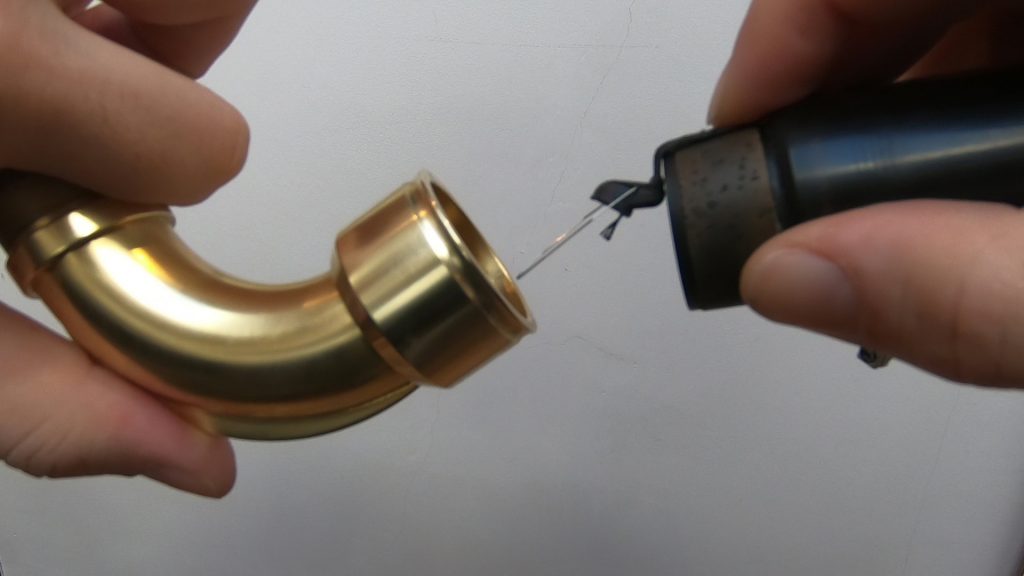
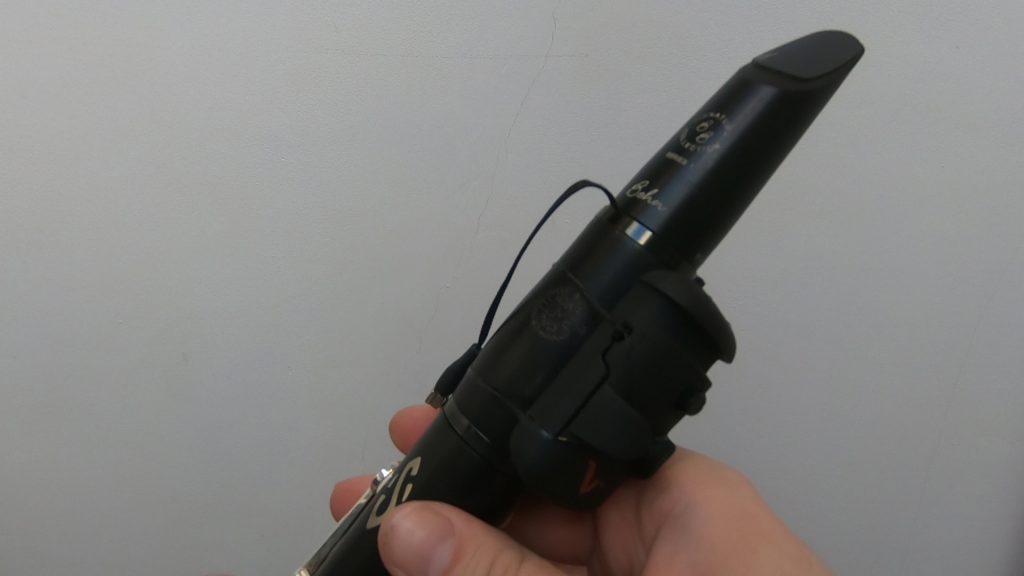
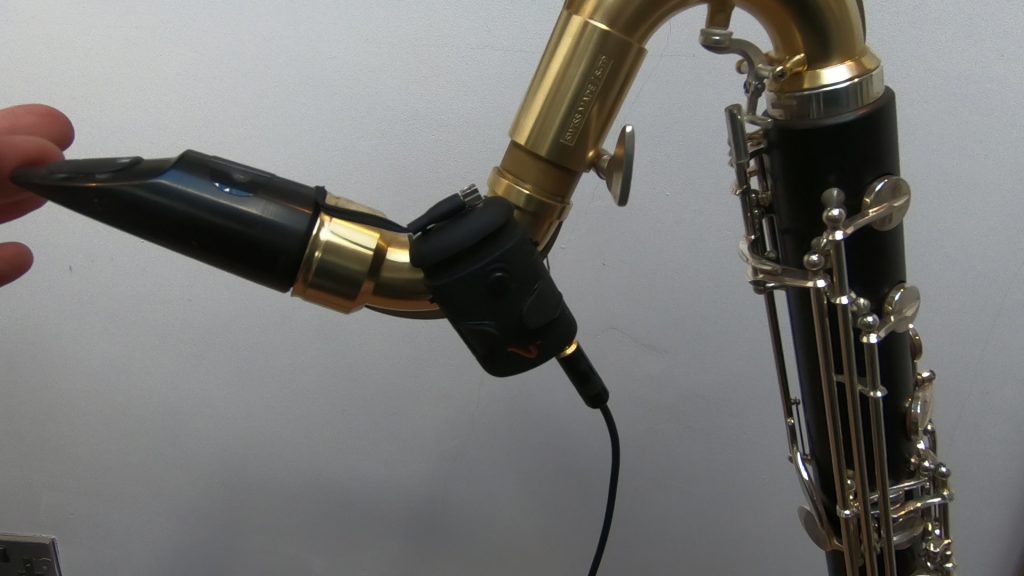
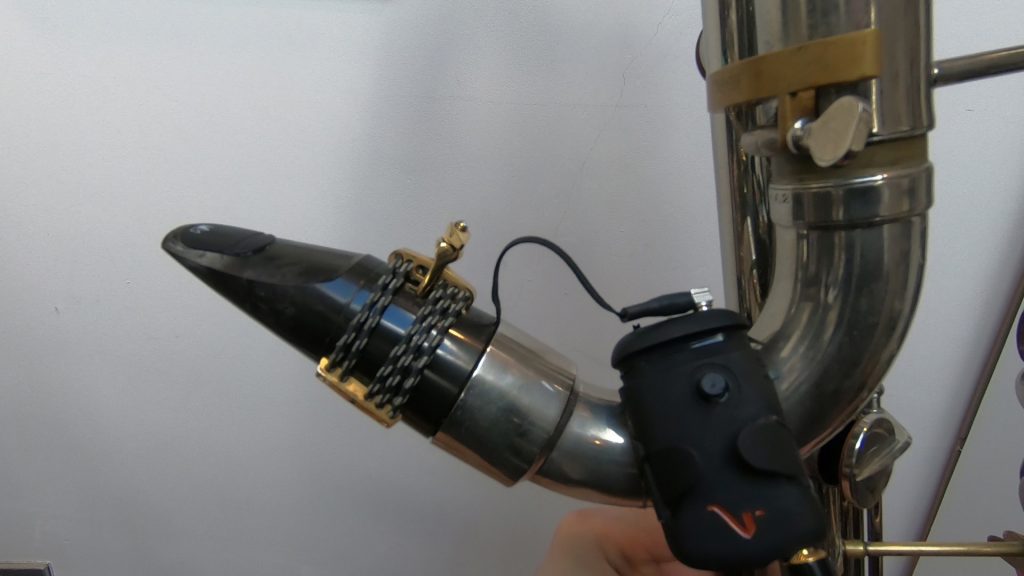
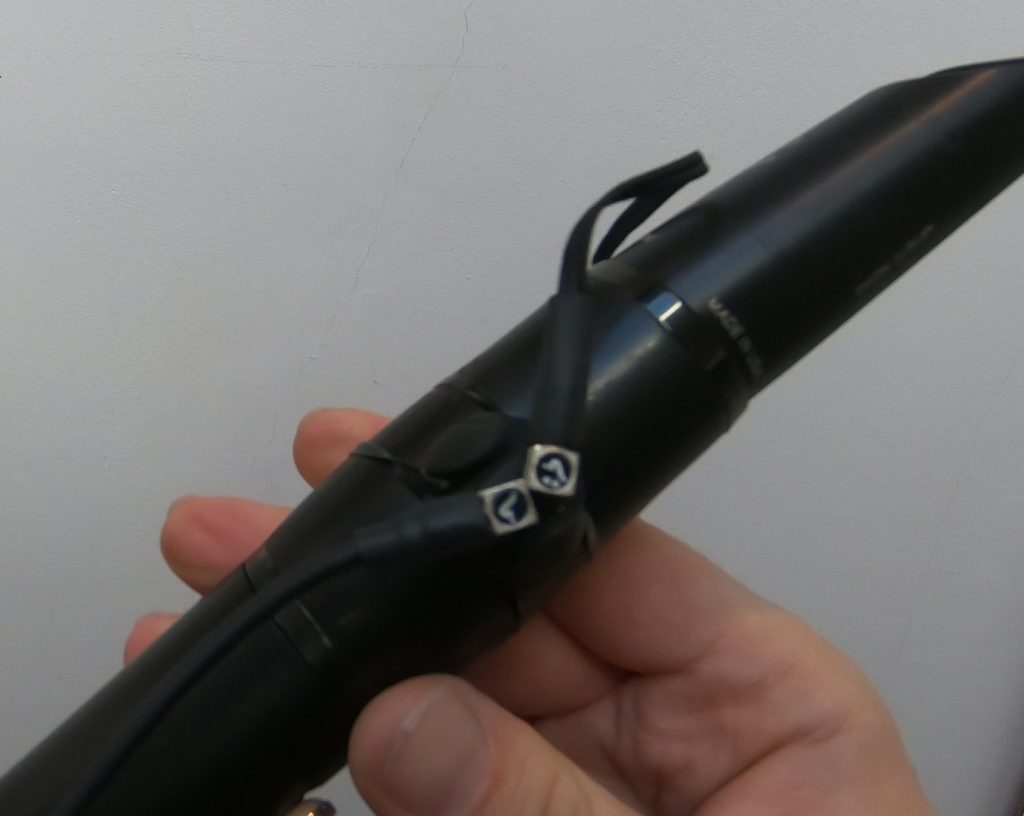
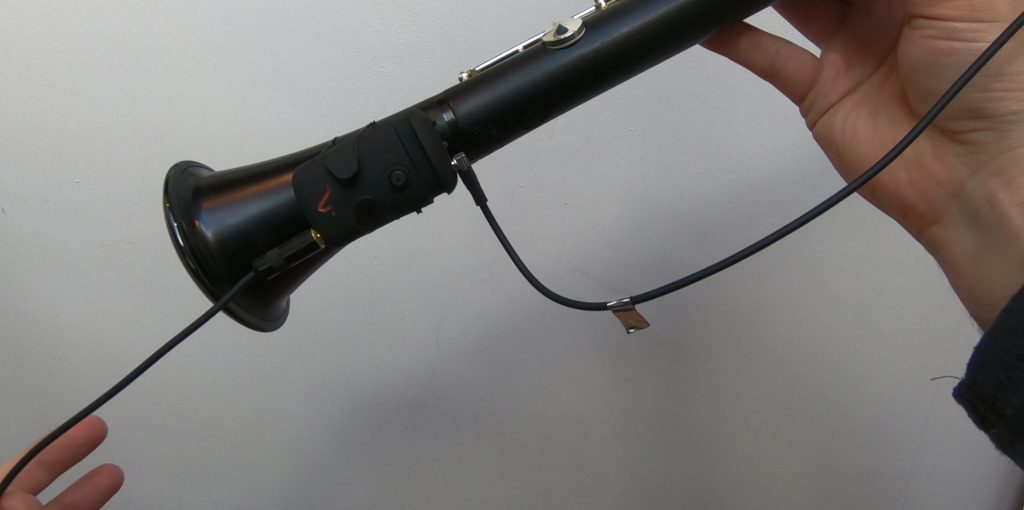
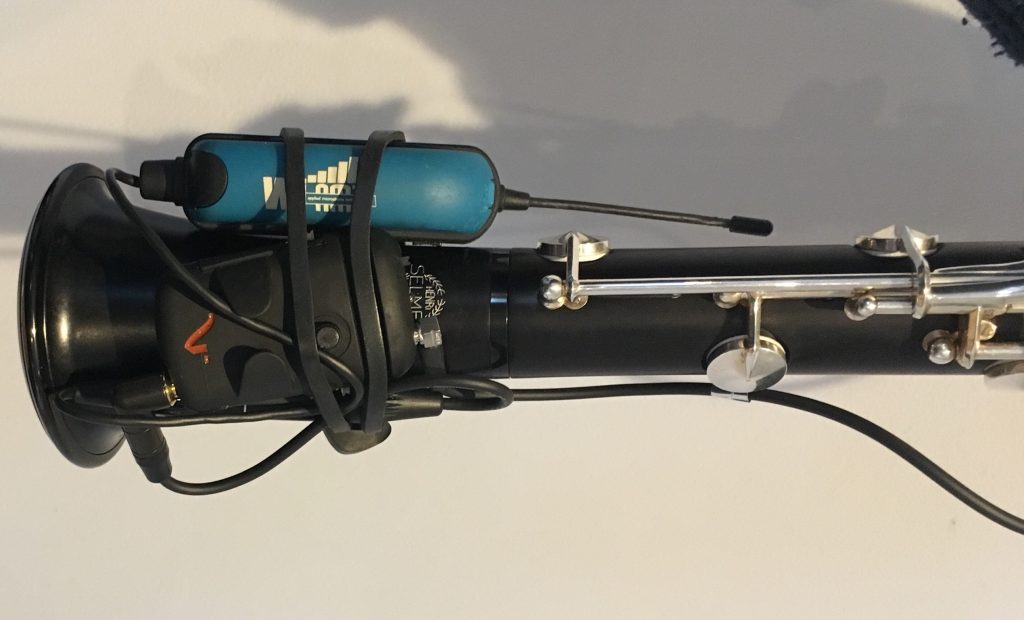
Thanks Jason – that’s really useful. Surprisingly usable sound for a barrel mic, especially on the bass. I used an SD Systems LCM82 on Bb for about 15 years, before switching to the AMT WS about 10 years ago, but haven’t done much really loud live stuff recently. May have to give an Intramic a try – the lightness of it is also appealing.
He’s just redesigned and retuned the preamp, with much better bass presence, so now it’s even better on bass! I’ll get some more demo videos up soon.
Thank you so much for this thorough review! You answered a ton of questions I didn’t even know I had. I’m pretty sold on the Intramic, but curious if you’ve noticed a difference using the various attachments live. (Wireless compared with XLR attachment that wasn’t recommended?)
I’ll most likely be using a wireless pack going through my Tonebone preamp so I can play with my effects pedals. I have 2 different line-ins (clarinet and sax) so I’ve appreciated the external preamp with a dedicated loop channel for effects. But wondering if that will be overkill with the Intramic preamp? Just curious if you have any thoughts on this.
Thanks a million!
Hi Laura, no, I haven’t noticed any difference, other than the normal differences you encounter with wired vs wireless. The Intramic’s preamp is really just to get the mic signal up to line level, so it would be fine to have it go through another preamp before your rig. Mine does. You have more control over the levels that way anyway.
Thanks for the additional info! I purchased one and have been so happy with the results.
Thank you Jason. I am a improvising bassoonist and was made aware of this mic from Paul Hanson
who made a video recently using this mic. I too have been using a wireless AMT (2 mic system all though I have
only using one which does do the job). The AMT accurately reproduces the acoustic sound but can have feedback
issues and may not work as well with effects. I was concerned about the durability of the mic having to wedge it against
the cork (bocal in my case). Thank you again for your careful review.
Thank you Jason, great review. Are you still as happy with this microphone? Has the cord lasted these years of use? Thanks again!
Yeah! I am also interested in this, how is your general opinion overall a few years after??
Thanks in advance 🙂
I still like this mic very much. For electronics, it’s definitely the best choice I think. The only thing is it’s a little bit fiddly putting it all together compared to a mic that just clips on and is ready to go.